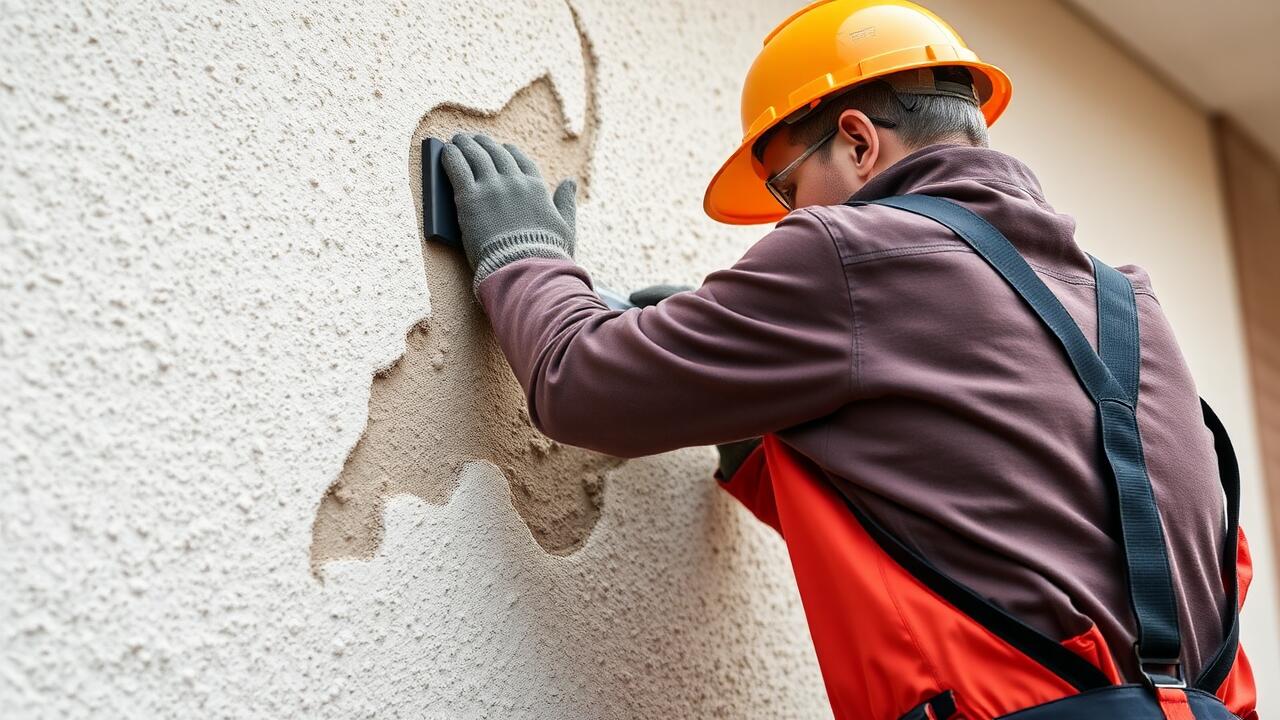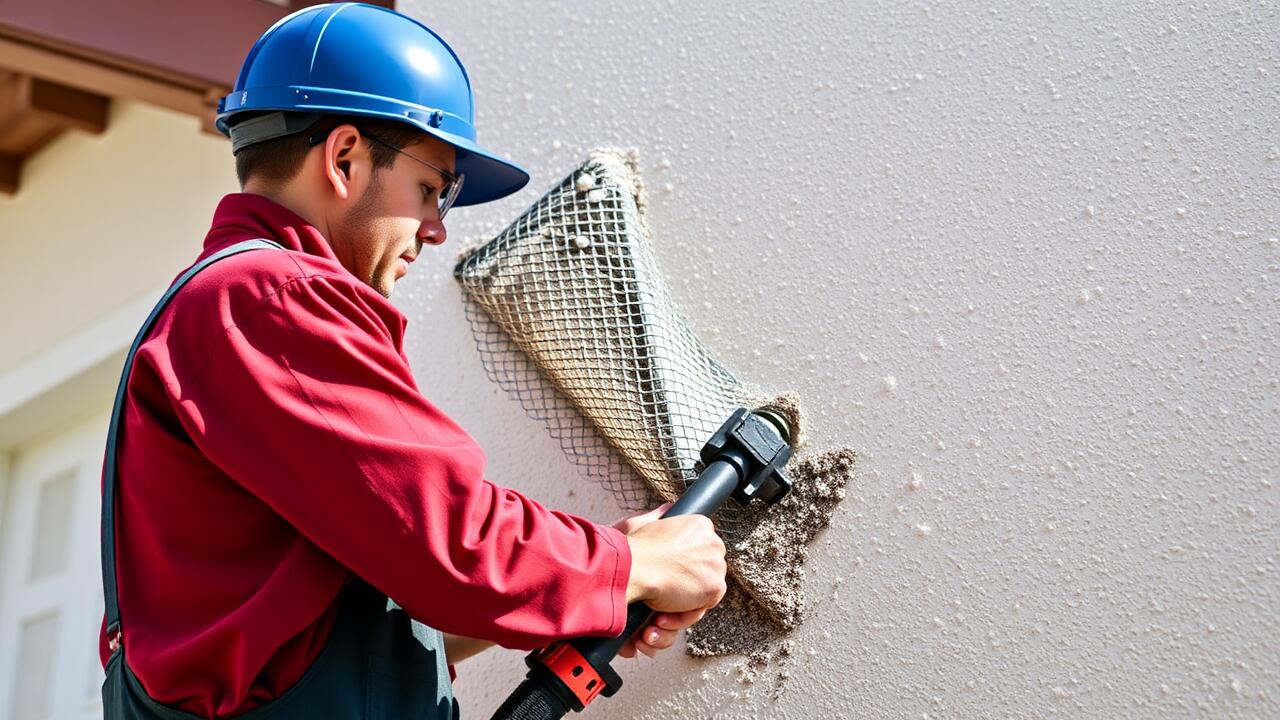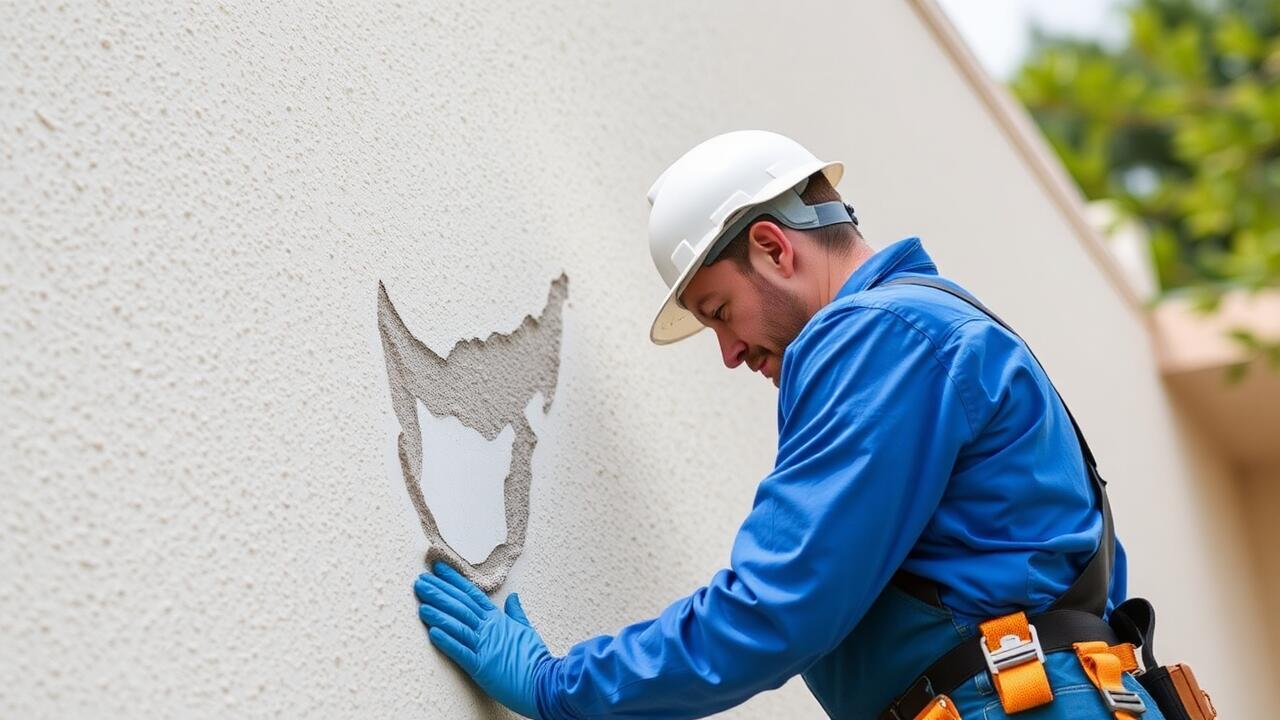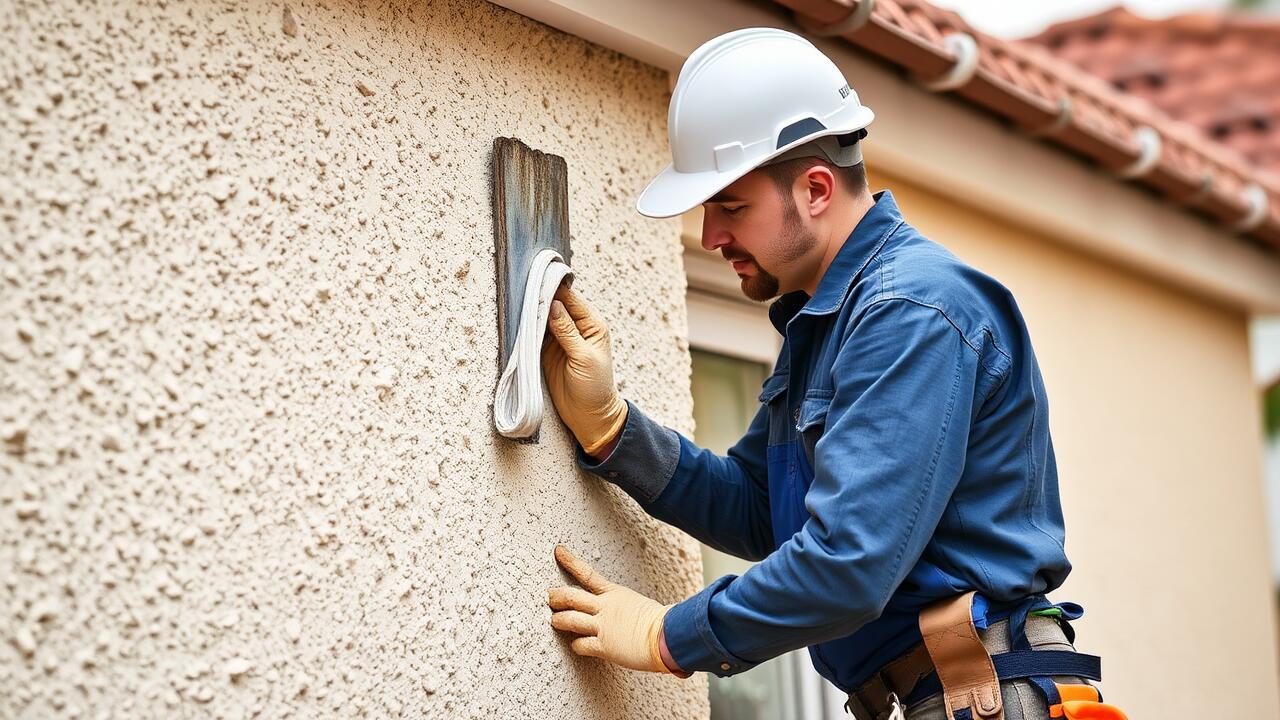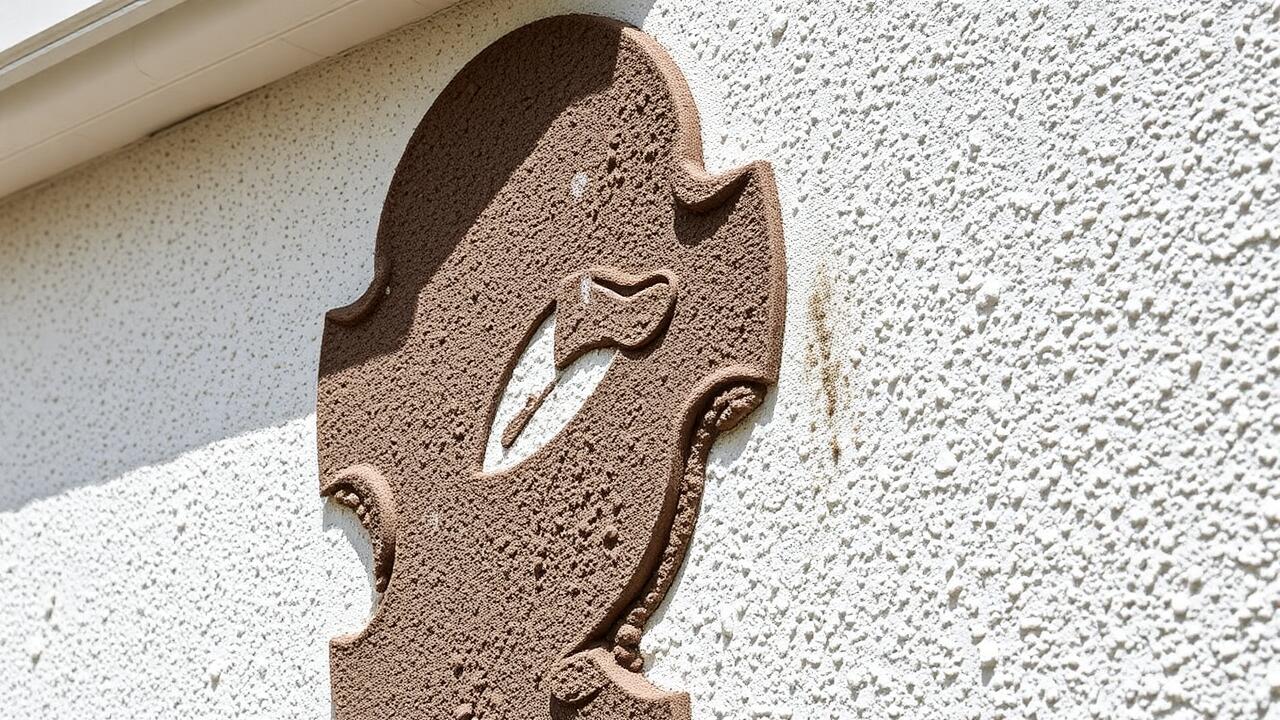
Texturing the Patch
Creating a seamless texture for your stucco patch is essential for achieving a professional appearance. To start, gather the right tools including a trowel, sponge, and a brush. Depending on the texture of the surrounding stucco, you may need to replicate techniques such as swirls, knockdowns, or stipples. This requires paying close attention to the existing pattern and aim for a match by mimicking these strokes with your tools. For specific guidance, searching for "Stucco Repair Tarzana, Los Angeles" can provide local expertise and insights tailored to your project.
After applying the patch material, you should allow it to dry partially before texturing. Working when the material is slightly damp ensures better adhesion and prevents cracking. Use the sponge or trowel to gently press and shape the material into the desired texture. If you're blending with coarse stucco, a firm touch may be necessary; whereas for finer textures, a lighter approach works best. Patience is key during this process. A well-textured patch will blend more seamlessly with the original stucco, enhancing the overall appearance of your home.
Techniques to Match Existing Stucco
Matching existing stucco texture requires careful attention to detail. One effective technique involves using a sponge or a trowel to replicate the original finish. Start by applying the patch material smoothly over the hole before introducing texture. Dabbing lightly with a damp sponge can help achieve a more uniform appearance. For deeper textures, a stippling brush or an old paintbrush may be used to recreate the desired effect. Practice on a scrap piece of material first to perfect your technique.
In areas like Stucco Repair Granada Hills, Los Angeles, it’s crucial to observe the surrounding stucco carefully. Take note of the texture pattern, depth, and finish. Observing the surrounding environment allows for an accurate match, resulting in a seamless repair. Utilizing multiple tools and varying techniques can yield the best results. By experimenting with different application approaches, the patched area can blend effortlessly with the existing surface, ensuring both durability and aesthetic appeal.
Painting the Repaired Area
Once the stucco patch has dried and any texture has been applied, it's time to paint the repaired area to blend it seamlessly with the surrounding surface. Choose a high-quality exterior paint designed for masonry surfaces. This choice enhances durability and provides protection against moisture and weathering, ensuring that the patch withstands the elements over time. Many homeowners in need of a fresh finish in places like Stucco Repair Granada Hills, Los Angeles, often find that a professional finish makes a significant difference in overall appearance.
Before applying paint, prepare the surface by cleaning it thoroughly. Remove any dust, debris, or loose particles that could interfere with adhesion. Priming the patched area can also be beneficial, especially if the existing stucco has a particular texture or color. After the primer dries, apply paint in even strokes, ideally using a brush or roller suited for textured finishes. This method helps achieve a smoother transition between the new and old stucco, allowing for a more uniform look.
Choosing the Right Paint for Stucco
When selecting paint for stucco, it’s vital to choose a product designed specifically for this porous material. High-quality acrylic latex paints offer flexibility and resistance to moisture, preventing potential damage over time. The paint should also have good breathability to allow moisture evaporating from beneath the surface. This ensures the integrity of both the finish and the stucco itself, reducing the likelihood of peeling and cracking.
For those in need of repairs in locations like Stucco Repair Granada Hills, Los Angeles, opting for paint that closely matches the color of the existing stucco will help achieve a seamless look. Many suppliers provide color-matching services, allowing homeowners to find the right shade easily. Additionally, consider paints with UV protection, which will enhance durability in sunny climates while maintaining the vibrancy of the color over time.
Preventive Measures for Future Repairs
Proper maintenance and regular inspections can significantly reduce the likelihood of needing extensive repairs. Check for cracks or signs of moisture regularly, especially after heavy rainfall or freezing temperatures. Addressing minor issues promptly can help prevent them from becoming larger and more costly. Additionally, consider applying a sealant to the stucco surface. This can offer an extra layer of protection against water infiltration, which is a common cause of damage.
Choosing quality materials during installation or repair is essential for enhancing the durability of stucco. It’s wise to invest in high-quality stucco mixes and finishes. For those living in areas prone to extreme weather, like Granada Hills, Los Angeles, reinforcing the exterior with mesh fabric or using a water-resistant barrier can be beneficial. Using these proactive measures not only helps maintain the aesthetic appeal but also minimizes the need for future stucco repair.
Tips to Avoid Stucco Damage
Maintaining stucco integrity requires regular inspections to catch potential issues early. Checking for cracks or moisture stains can help prevent larger damage. Make sure gutters and downspouts direct water away from the stucco surface. Keeping plants trimmed and away from the walls reduces the risk of moisture retention and damage caused by vines or roots.
Proper sealing is also a key factor in avoiding stucco damage. Applying a high-quality water repellent sealant can create a barrier against moisture. Additionally, regularly cleaning the stucco surface prevents the buildup of dirt, mold, and algae that can deteriorate the material. For those looking for expert assistance, consider services like Stucco Repair Granada Hills, Los Angeles to ensure your stucco remains durable and visually appealing.
FAQS
What materials do I need for patching small holes in stucco?
To patch small holes in stucco, you will typically need stucco patching compound, a trowel, a putty knife, a wire brush, and possibly a spray bottle for wetting the area.
How do I texture the patch to match existing stucco?
To texture the patch, you can use techniques like stippling, brushing, or spraying to mimic the existing stucco finish. Make sure to practice on a scrap piece if you’re unsure of the technique before applying it to the patch.
Can I paint over the stucco patch immediately after it dries?
It is recommended to wait for the patch to fully cure, which can take anywhere from a few days to a week, depending on the product used and environmental conditions, before painting over it.
What type of paint should I use for stucco surfaces?
A high-quality exterior acrylic latex paint is ideal for stucco surfaces as it allows the material to breathe while providing a durable and weather-resistant finish.
How can I prevent future damage to my stucco?
To prevent future stucco damage, ensure proper drainage around the foundation, conduct regular inspections for cracks or wear, and address any issues promptly. Additionally, consider sealing your stucco to protect it from moisture and weather elements.
